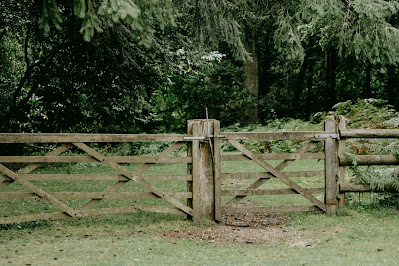The Ultimate Guide to Boundary Survey Costs: What You Need
to Know
Are you considering getting a
boundary survey done but have no idea about the costs involved? Look no
further! In this ultimate guide, we'll break down everything you need to know about
boundary survey costs and help you make an informed decision.
Boundary surveys are essential for
property owners to clearly understand their property lines and avoid any
disputes or encroachments. However, the cost of a boundary survey can vary
based on several factors such as the size and complexity of the property,
location, terrain, and local regulations. It's crucial to have a clear
understanding of these costs before hiring a surveyor. If you're wondering how much does a land surveyor cost? this section will dive deeper into the various factors that influence the final price.
In this comprehensive guide, we'll
explore the different components that determine boundary survey costs,
including the initial consultation fee, field work expenses, research and
document retrieval costs, and the final report. We'll also discuss some additional
factors that may influence the overall cost and provide you with some tips to
help you save money.
Don't let the ambiguity surrounding
boundary survey costs deter you from getting the survey you need. Read on to
discover all the essential information you need to know to navigate the world
of boundary survey costs and ensure a hassle-free experience.
What is a boundary survey
A boundary survey is a detailed
examination and mapping of property lines to determine their precise location
and dimensions. It involves the work of professional surveyors who use
specialized tools and techniques to establish and mark the boundaries of a
property. The survey typically includes identifying existing markers or setting
new ones, measuring distances, and analyzing legal documents and historical
records.
The primary goal of a boundary
survey is to provide property owners with accurate information about their
property lines. This information is crucial for various reasons, including
property development, construction projects, resolving property line disputes,
and obtaining building permits. Without a boundary survey, property owners may
unknowingly encroach upon neighboring properties or face legal complications
due to inaccurate property boundaries.
Importance of boundary surveys
Boundary surveys play a vital role
in protecting property owners' rights and preventing conflicts with neighboring
landowners. By having a clear understanding of their property boundaries,
owners can avoid potential disputes and encroachments, which can save them
significant time, money, and legal headaches in the long run.
For property development or
construction projects, a boundary survey is often a prerequisite. It ensures
that structures are built within the property's boundaries and comply with
local zoning regulations. Additionally, lenders may require a boundary survey
before providing financing for real estate transactions to ensure there are no
encroachments or boundary-related issues that could affect the property's
value.
Furthermore, a boundary survey can
be essential when settling property line disputes. If there is a disagreement
between neighboring property owners about the location of the boundary, a
survey can provide an impartial and accurate assessment of the boundaries,
helping to resolve the dispute amicably.
Factors affecting boundary survey costs
The cost of a boundary survey can
vary significantly depending on various factors. To understand why boundary
survey costs can differ, let's explore some of the most significant factors
that influence the overall price.
1.
Property Size and Complexity:
·
The size of the property is one
of the primary factors that affect the cost of a boundary survey. Larger
properties require more time and resources to survey, resulting in higher
costs.
·
The complexity of the
property's boundaries also plays a role. If the property has irregular shapes,
multiple corners, or challenging terrain, the surveyor may need to spend more
time and effort in accurately determining the boundaries, which can increase
the cost.
2.
Location and Terrain:
·
The location of the property
can impact the survey cost. In remote or inaccessible areas, surveyors may face
challenges in reaching the property, which can increase the cost due to
additional travel time and expenses.
·
Similarly, the terrain of the
property can affect the complexity of the survey. If the property is hilly,
heavily wooded, or has water bodies, the surveyor may encounter difficulties in
conducting the survey, leading to higher costs.
3.
Local Regulations:
·
Different states or
municipalities may have specific requirements or regulations regarding boundary
surveys. These regulations can vary in complexity and may require additional
work or documentation, resulting in higher costs.
4.
Time and Effort Required:
·
The amount of time and effort
the surveyor needs to spend on the fieldwork and research aspects of the survey
will impact the overall cost. Complex or disputed boundaries may require more
extensive research and analysis, resulting in higher costs.
5.
Additional Services:
·
Some boundary surveys may
require additional services such as topographic surveys, elevation
certificates, or flood zone determinations. These additional services, if
needed, will add to the overall cost of the survey.
It's essential to communicate with
your surveyor and provide them with accurate information about your property to
ensure an accurate cost estimate. By understanding the factors that influence
boundary survey costs, you can have a better idea of what to expect when hiring
a surveyor.
Average cost of a boundary survey
Determining the exact cost of a boundary
survey can be challenging due to the various factors involved. However,
understanding the average cost range can provide a helpful starting point. On
average, boundary surveys can range from $500 to $2,500 or more, depending on
the aforementioned factors.
For smaller properties with
straightforward boundaries, the cost may be on the lower end of the range. On
the other hand, larger properties with complex boundaries, difficult terrain,
or extensive research requirements can result in higher costs.
It's important to note that the cost
of the survey may also vary based on the surveyor's expertise, reputation, and
location. Surveyors with more experience or located in high-demand areas may
charge higher fees.
When obtaining cost estimates, make
sure to request detailed breakdowns of the expenses to understand what services
are included and if there are any additional charges. This will help you make
an informed decision and avoid any surprises later on.
How to Choose a Reputable Surveyor for Your Boundary Survey
When it comes to boundary surveys,
it's crucial to hire a reputable and experienced surveyor who can accurately
determine your property lines. Choosing the right surveyor can make all the
difference in the quality and cost of the survey. Here are some key factors to
consider when selecting a surveyor:
1. Qualifications and Licenses
Ensure that the surveyor you choose
is licensed and qualified to perform boundary surveys in your state or region.
Licensing requirements may vary, so it's important to check if your surveyor
meets the necessary criteria. Additionally, look for surveyors who are members
of professional organizations such as the National Society of Professional
Surveyors (NSPS) or the American Congress on Surveying and Mapping (ACSM).
2. Experience and Expertise
Experience matters when it comes to
boundary surveys. Look for surveyors who have a proven track record and
extensive experience in conducting boundary surveys in your area. An
experienced surveyor will be familiar with local regulations, property laws, and
potential challenges specific to your region. They will also be equipped with
the necessary knowledge and skills to handle complex or unique survey
requirements.
3. Reputation and Reviews
Research the surveyor's reputation
and read reviews from previous clients. Online platforms, such as Google, Yelp,
or the Better Business Bureau, can provide valuable insights into a surveyor's
professionalism, reliability, and customer satisfaction. Don't hesitate to ask
for references and contact previous clients to obtain firsthand feedback about
their experience working with the surveyor.
Remember to obtain multiple quotes
from different surveyors to compare their services and costs. It's important to
strike a balance between cost and quality. Choosing the cheapest option may
lead to subpar results, while opting for the most expensive surveyor may not
guarantee the best outcome. Consider the reputation, experience, and
qualifications of the surveyor along with their pricing.




Comments
Post a Comment